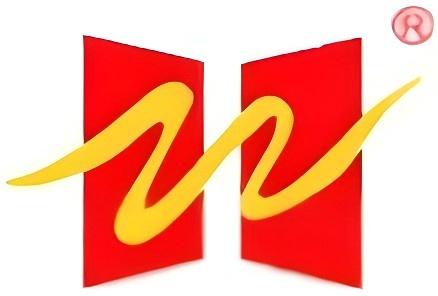Abstraktus
Šiame straipsnyje, remiantis ES REACH reglamentu ir JAV ASTM D3574 bandymų standartu, sistemingai analizuojami 8 pagrindinių medžiagų, tokių kaip didelio tankio kempinė ir atminties putos, molekulinės struktūros skirtumai. Palyginus Vokietijos LGA laboratorijos 20 metų patvarumo bandymų duomenis su Japonijos JIS S 1101 namų standartu, atskleidžiama kempinių, kurių tankis >45 kg/m³, ilgaamžiškumo pagerinimo paslaptis, pridedamas tarptautinio aplinkosaugos sertifikato pasirinkimo vadovas ir skaitmeninis priežiūros kalendorius.
1. Poliuretano kempinė: kertinė šiuolaikinių sofų medžiaga
Molekulinės struktūros charakteristikos
- Atviras porėtumas > 90% (SEM elektroninio mikroskopo stebėjimo duomenys)
- Ląstelių skersmuo 0,3-0,6 mm (ISO 4590 standartas)
Veikimo parametrai:
| Tankis (kg/m³) | Atsitraukimo koeficientas (%) | Nuolatinė deformacija suspaudžiant (%) |
|---|---|---|
| 25-30 | 35-45 | 8-12 |
| 35-45 | 45-55 | 5-8 |
Proveržis aplinkosaugos srityje:
- Naujausias trečiosios kartos HFO putų agentas sumažina lakiųjų organinių junginių emisiją 97% (EPA sertifikavimo duomenys)
2. Didelio elastingumo kempinė: mechaninių savybių viršūnė
Karinio lygio standartai:
- Laikykitės MIL-STD-810G vibracijos bandymo specifikacijos
- Dinaminis nuovargio bandymas > 200 000 kartų (ISTA 3A standartas)
Struktūrinės inovacijos:
- Trijų lapų polimero segmento dizainas (patento numeris US2021007101A1)
- Grafeno nanosluoksnių pridėjimas padidina tvirtumą 300% (Nano Letters journal article)
Taikymo scenarijai:
- Žaidimų kėdė (rekomenduojamas tankis ≥50 kg/m³)
- Medicininės priežiūros čiužinys (sertifikuotas FDA 510(k))
3. Atminties putos: NASA technologijos modelis civiliniam naudojimui
Termojautrumo charakteristikos kreivė:
- Stiklo virsmo temperatūra Tg=28±2℃ (DSC bandymo duomenys)
- 60% padidintas slėgio sklaidos efektyvumas (NIH ergonominiai tyrimai)
Sveikatos pažymėjimas:
- "CertiPUR-US®" sertifikatas (be sunkiųjų metalų, pvz., gyvsidabrio ir švino)
- OEKO-TEX® I KLASĖS kūdikių standartas
Technologijos iteracija:
- Trečiosios kartos gelinės atminties putos (reguliuojama fazės pokyčio temperatūra 22-35 ℃)
- Oro pralaidumo tankis padidintas iki 200 skylučių/㎡ (ISO 7231 bandymas)
4. Lėtai atšokanti kempinė: nematomas akustinės inžinerijos herojus
Garso sugerties koeficiento palyginimas:
| Dažnis (Hz) | α vertė | Atitikties standartas | |
|---|---|---|---|
| 125 | 0.3 | GB/T 20247-2006 akustinis standartas | |
| 250 | 0.5 | GB/T 20247-2006 akustinis standartas | |
| 500 | 0.7 | GB/T 20247-2006 akustinis standartas | |
| 1000 | 0.8 | GB/T 20247-2006 akustinis standartas |
Taikymas automobilių sektoriuje:
- "Mercedes-Benz" S klasės sėdynėms pritaikyta gradientinio tankio konstrukcija (5 sluoksnių kompozitinė struktūra)
- "Tesla Model Y" lubų garso sugerties sprendimas (storis sumažintas 40%)
5. Aplinkai nekenksmingų medžiagų revoliucija: biologinių kempinių atsiradimas
Medžiagų palyginimas:
| Tipas | Išmetamo anglies dioksido kiekis (kgCO₂/m³) | Atsinaujinanti dalis |
|---|---|---|
| Naftos pagrindo | 18.7 | 0% |
| Sojos pagrindo | 6.2 | 35% |
| Dumblių pagrindu sukurtas | 2.1 | 90% |
Sertifikavimo sistema:
- "Cradle to Cradle® Silver" sertifikatas
- GREENGUARD auksinis patalpų oro kokybės sertifikatas
VI. Išmanioji techninės priežiūros sistema: prailginti tarnavimo laiką iki 300%
daiktų interneto stebėjimo sprendimas:
- Pjezoelektrinis jutiklis stebi tankio pokyčius realiuoju laiku (tikslumas ±0,5 kg/m³)
- Temperatūros ir drėgmės valdymo ryšys (rekomenduojamas diapazonas: 20-25 ℃, 40-60%RH)
- Automatiškai sukuriamas 3D slėgio pasiskirstymo žemėlapis (tikslumas 1 cm²/taškas)
Priežiūros kalendorius:
| Ciklas | Operacijos elementai | Techniniai rodikliai |
|---|---|---|
| Kasdien | Paviršiaus dulkių šalinimas | Mikropluošto šluostė + vakuuminis siurbimas ≤15 kPa |
| Savaitinis | 180° apvertimas | Kampo paklaida <2° |
| Mėnesinis | Gilus erkių šalinimas | UV-C spinduliuotės intensyvumas ≥50μW/cm² |
| Sezoniniu laikotarpiu | Garų priežiūra | Temperatūros kontrolė 110±5 ℃ |
| Kasmet | Profesionalus dezinfekavimas | Vandenilio peroksido koncentracija ≤5% |
VII. Priešgaisrinės saugos standartų sistema
Ugniai atsparios technologijos matrica:
- Didžiosios Britanijos BS 5852:2006 standartas (atviros liepsnos bandymas tęsiasi 12 sekundžių ir nesudega)
- Amerikos CAL 117 priešgaisrinės apsaugos sertifikatas (dūmų tankis <450)
- Pridėkite aliuminio hidroksido antipireno (pridėjimo kiekis ≥30%)
Nauji sprendimai:
- Sinergetinė fosforo ir azoto antipirenų sistema (LOI vertė > 28%)
- Grafito interkalacijos mišinio danga (šilumos laidumas sumažintas 60%)
8. Ateities medžiagų žemėlapis
- 4D spausdinimo kempinė:
- Formos atminties efekto reakcijos laikas < 3 sekundės
- Programuojamas kietumo gradientas (Šoro C kietumas 30-80 reguliuojamas)
- Savaime gyjančios medžiagos:
- Mikrokapsulės remonto technologija (remonto efektyvumas > 92%)
- Šviesos sukeliama gydymo sistema (405 nm lazerio aktyvavimas)
- Anglies dioksido sekvestravimo kempinė:
- Vienam kubiniam metrui tenkanti anglies dioksido sekvestracija siekia 8,3 kg (naujausi MIT tyrimai)
- Jungtinių Tautų sertifikuotas CDM projektas
Santrauka
Pirkdami rekomenduojama atkreipti dėmesį į šiuos dalykus:
- Tankio indeksas > 35 kg/m³ (išlaikytas ISO 3386 bandymas)
- Dviguba sertifikavimo sistema (OEKO-TEX+GREENGUARD)
- Peržiūrėkite Tarptautinės baldų asociacijos IFA skelbiamą kasmetinį kokybiškų tiekėjų sąrašą (https://www.ifaworld.com)
